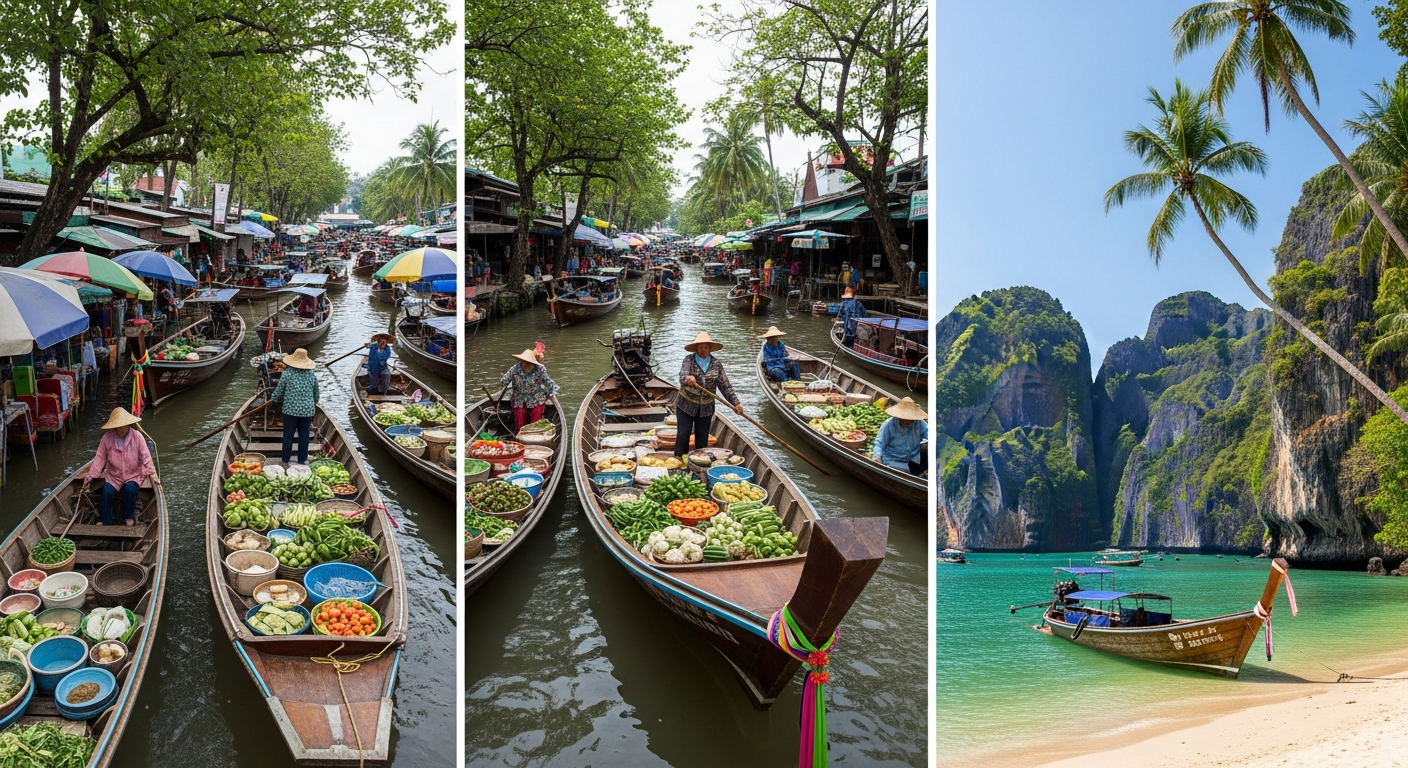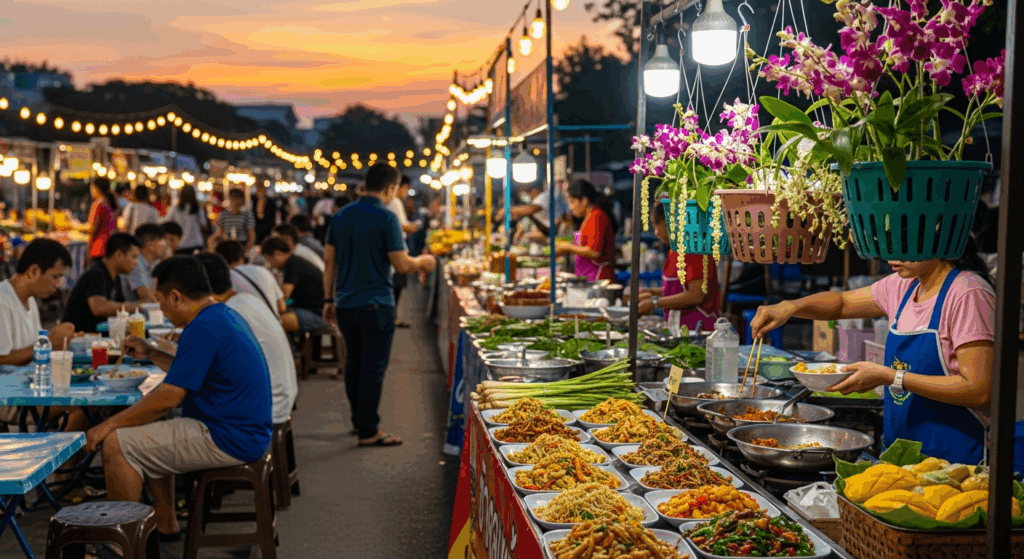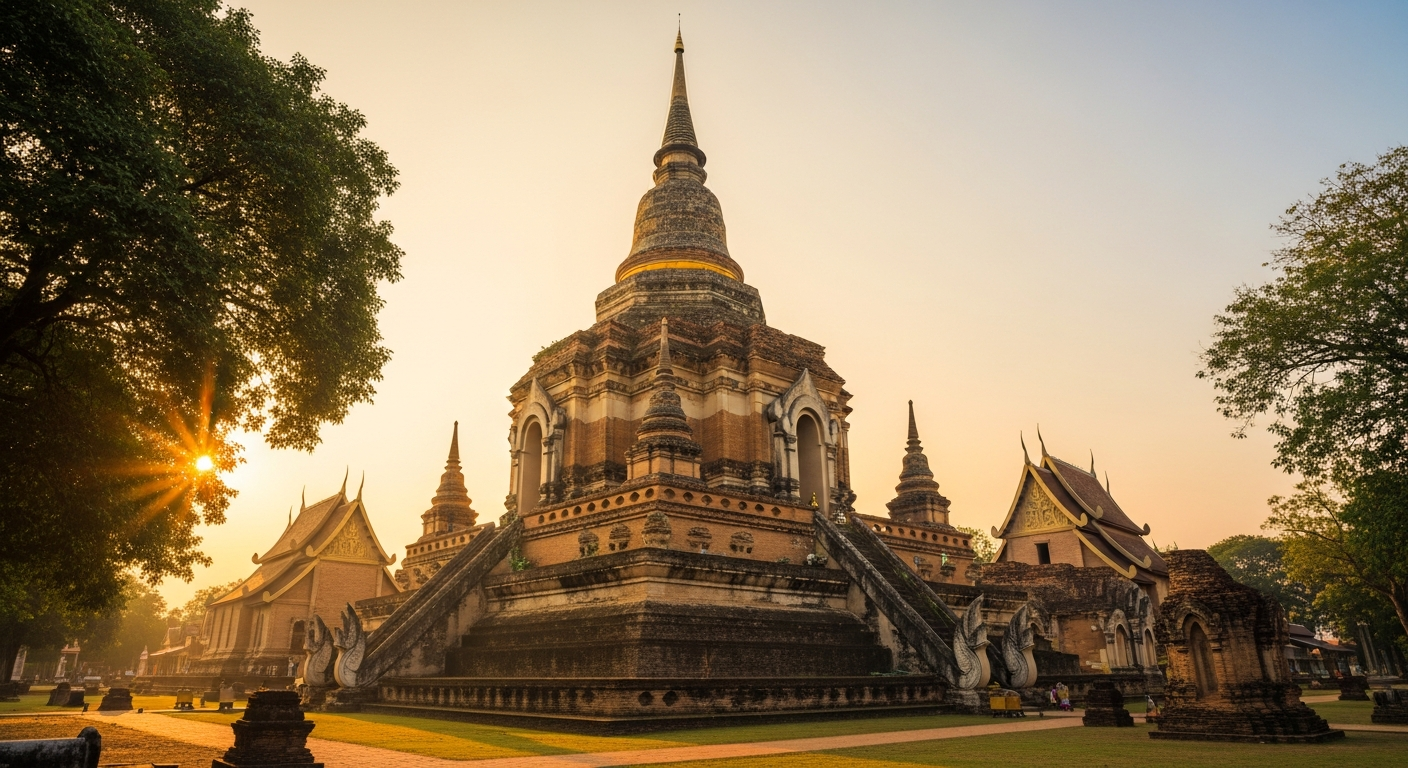Thailand beckons travelers with its vibrant culture and stunning landscapes. From golden temples to turquoise waters, the country offers endless adventure. Planning such a trip can feel overwhelming. However, this guide breaks it down into simple, manageable steps. We will cover everything you need to know. You can craft your perfect Thai itinerary with confidence.
Pre-Trip Essentials: Getting Ready
Proper planning before you leave ensures a smooth and stress-free vacation. This first stage involves understanding the best time to go, checking visa rules, and preparing for a healthy trip. Getting these details right sets the foundation for a fantastic adventure.
When to Visit Thailand
Choosing the right time to visit is key to a great trip. Thailand’s climate varies, but it generally has three seasons. The cool, dry season runs from November to February. It offers pleasant temperatures and lower humidity. Consequently, this is the peak tourist season with higher prices and bigger crowds.
The hot season lasts from March to May. Temperatures can soar, especially in April. This is a great time for beach lovers who enjoy the heat. Finally, the rainy season spans from June to October. While you can expect daily downpours, they are often brief. The rain also brings lush green landscapes and fewer crowds. For example, visiting during the shoulder months like October or March can offer a good balance of weather and price.
Visas and Entry Requirements
Navigating visa rules is a crucial first step. Many nationalities can enter Thailand for up to 30 days without a visa. This is known as a visa exemption. However, you must always check the latest requirements with an official source. Official Thai embassy or consulate websites provide the most accurate information. Source
If you plan to stay longer, you will likely need to apply for a tourist visa in advance. These rules can change, so verifying them before you book is essential. Ensure your passport has at least six months of validity remaining from your date of entry. This is a strict requirement for most international travel.
Health and Safety Precautions
Your health is your top priority while traveling. Before your trip, consult your doctor or a travel clinic. They can advise on recommended vaccinations for Thailand. Additionally, while malaria risk is low in most tourist areas, mosquito-borne illnesses like dengue fever are present. Therefore, using insect repellent is a smart precaution.
Stick to bottled or filtered water to avoid stomach issues. Be adventurous with street food, but choose popular, busy stalls. This indicates fresh ingredients and high turnover. Furthermore, get comprehensive travel insurance. It should cover medical emergencies, trip cancellations, and lost luggage for peace of mind. Thailand’s Regions – Tourism Authority of Thailand
Exploring Thailand’s Diverse Regions
Thailand is a country of incredible diversity, with distinct regions that each offer a unique experience. From the urban energy of the central plains to the serene mountains of the north and the idyllic islands of the south, there is something for every type of traveler.

The Bustling Heart: Central Thailand
Central Thailand is the country’s historical and modern hub. It is home to the sprawling metropolis of Bangkok. The capital city is a whirlwind of activity. You can explore ornate temples, cruise along the Chao Phraya River, and dive into world-class shopping malls.
Key attractions in and around Bangkok include:
- The Grand Palace: A dazzling complex of sacred buildings that once housed the kings of Siam.
- Wat Pho and Wat Arun: Iconic temples known for the Reclining Buddha and their riverside spires.
- Floating Markets: Experience a traditional way of life at markets like Damnoen Saduak or the more local Amphawa.
- Ayutthaya: The former capital of Siam, now a UNESCO World Heritage site with impressive temple ruins.
Bangkok’s energy is infectious. The city offers everything from luxury hotels to budget-friendly hostels. Its street food scene is legendary, providing delicious and cheap meals on almost every corner. Chiang Mai Travel Guide – Lonely Planet
The Cultural North: Northern Thailand
For a different pace, head to Northern Thailand. This region is known for its misty mountains, rich culture, and cooler climate. Chiang Mai is the area’s main city. It serves as a perfect base for exploring the surrounding nature and history. Many travelers find it more relaxed than Bangkok.
In the north, you can immerse yourself in unique activities. For instance, you can visit ethical elephant sanctuaries. These places focus on animal welfare rather than entertainment. You can also take a Thai cooking class to learn the secrets of local cuisine. The region is also home to hundreds of ancient temples, including the stunning Wat Phra That Doi Suthep, which overlooks Chiang Mai from a mountaintop. Further north, the city of Chiang Rai offers sights like the unique White Temple (Wat Rong Khun). This area is perfect for trekking and enjoying a slower way of life.
The Island Paradise: Southern Thailand
Southern Thailand is world-famous for its spectacular beaches and islands. The region is split by a peninsula, creating two distinct coastal areas. On the west (Andaman Sea) side, you will find Phuket, Krabi, and the Phi Phi Islands. These areas are known for their dramatic limestone karsts rising from turquoise waters. Activities here include island hopping, rock climbing, and diving.
On the east (Gulf of Thailand) side, you have islands like Koh Samui, Koh Phangan, and Koh Tao. This area is famous for its palm-fringed beaches and vibrant nightlife. Koh Phangan hosts the legendary Full Moon Party. Meanwhile, Koh Tao is a premier destination for scuba diving certification. Whether you seek relaxation on a quiet beach or adventure in the sea, Southern Thailand delivers an unforgettable coastal escape.
Practical Tips for Your Trip
Getting Around Thailand
Traveling within Thailand is both affordable and efficient. For long distances, domestic flights are a quick option. Airlines like AirAsia and Nok Air offer competitive prices. The train network is another great way to see the country. Overnight trains, for example, are a popular way to travel from Bangkok to Chiang Mai.
Buses connect nearly every town and city. They are the most common mode of transport for locals and budget travelers. In cities, you have many choices. Bangkok has the modern BTS Skytrain and MRT subway. In most places, you can hire a taxi or use a ride-sharing app like Grab. For a truly local experience, hop on a tuk-tuk for short distances, but be sure to agree on the price beforehand.
Savoring Thai Cuisine
Thai food is a highlight for many visitors. The cuisine perfectly balances sweet, sour, salty, and spicy flavors. Do not leave without trying some classic dishes. Pad Thai (stir-fried noodles), Green Curry, and Tom Yum Goong (spicy shrimp soup) are essential.
Street food is a huge part of the culture. You can find delicious and cheap meals everywhere. Look for stalls with long lines of locals—it’s usually a sign of quality. Be open to trying new things. From mango sticky rice for dessert to savory grilled meats, your taste buds are in for a treat.

Staying Safe and Respectful
Thailand is generally a safe country for tourists. However, it’s always wise to take common-sense precautions. Keep your valuables secure and be aware of your surroundings, especially in crowded areas.
Respect for local culture is very important. When visiting temples, you must dress modestly. This means covering your shoulders and knees. Also, the royal family is highly revered in Thailand. You should never make disrespectful comments about them. A friendly smile and a polite “sawasdee” (hello) will go a long way in your interactions with the wonderful Thai people.
In summary, a little planning goes a long way. By choosing your season, understanding the regions, and embracing the culture, you are ready for an incredible journey. Thailand’s magic awaits.

